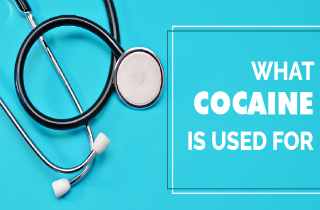Cocaine is a powerfully addictive stimulant drug that speeds up your whole body. You may feel full of energy, happy, and excited when using cocaine. But after cocaine’s duration of action wears off, your mood can change. You can become angry, nervous, and afraid that someone’s out to get you.
So what exactly is in cocaine? What are its primary uses? Does cocaine work for everyone? We explore cocaine`s former medical use, its side effects, misuse and addiction here. Then, we invite your questions about cocaine at the end.
What is cocaine?
Cocaine is a psychoactive substance made from the leaves of the coca plant native to South America. It is processed with a blend of other chemicals to form a white powder known as cocaine hydrochloride. Cocaine is usually a white to light brown crystalline powder, shiny rather than dull in appearance. In the early 1900s, purified cocaine was the main active ingredient in most of the tonics and elixirs that were developed to treat a wide variety of illnesses. But since then, cocaine chemistry and use has been limited; cocaine is known to be an addictive stimulant that directly affects the brain and has a high potential for abuse.
What are the medical uses of cocaine?
Over the years, cocaine became a popular medicine and it was credited for curing a wide variety of diseases and illnesses. However, reports soon started to appear regarding its social abuse potential and related growing crime figures. As a result, cocaine was classified as a narcotic and its use was restricted to specific surgical procedures and medicinal preparations.
Today, cocaine and its derivatives are still popular local anesthetics in some countries during operations of the ear, nose and throat. Cocaine blocks the initiation or conduction of the nerve impulse following local application, thereby effecting local anesthetic action. It is absorbed from all sites of application, including mucous membranes and the gastrointestinal mucosa. Cocaine is also used in a preparation given to alleviate the pain (physical and mental) of terminal diseases. However, cocaine belongs to the Schedule II class of drugs in the U.S. under the Controlled Substances Act, which means it has a high potential for abuse and limited medical usage.
Cocaine uses and side effects
The effects of cocaine depend on the strength of the dose, the blend of chemicals contained in any batch, the physiology of the person using cocaine, and their state of mind at the time of taking the drug. A cocaine rush only lasts for a short amount of time, perhaps 15–30 minutes after inhalation/injection or a few hours after insufflation (snorting). Generally, some of the immediate effects of cocaine include:
- a burst of energy
- accelerated heart rate
- dilated pupils
- feelings of euphoria, exhilaration and confidence
- hallucinations
- increase in body temperature and blood pressure
- loss of appetite
- nausea and vomiting
- nervousness
- restlessness
- the urge to have sex
- tremors
Illegal cocaine use
Cocaine is illegal to use in the U.S. and can lead to legal or judicial problems. Additionally, cocaine use is often associated with a pattern of binge use — sporadically consuming large doses of stimulants over a short period of time. Heavy users may inject themselves every few hours, continuing until they have depleted their drug supply or reached a point of delirium, psychosis, and physical exhaustion. And cocaine use has been connected to crimes such as assault, theft, fraud, and prostitution.
Problems using cocaine
People who use cocaine frequently can become addicted to it. The widespread abuse of cocaine has stimulated extensive efforts to develop treatment programs for cocaine users. As with any drug addiction, this is a complex disease that involves biological changes in the brain as well as myriad of social, familial, and other environmental problems. Therefore, treatment of cocaine addiction must be comprehensive, and strategies need to assess the neurobiological, social, and medical aspects of the patient’s drug abuse. Treatment options for cocaine dependence generally include:
- Detoxification
- Individual counselling
- Group therapy
Presently, there are no FDA-approved medications to treat cocaine addiction. See your doctor for information and a referral, or contact an alcohol and other drug service in your area if you think you’ve developed a problem with cocaine. You do not need to suffer alone!
Cocaine use questions
Do you still have questions about cocaine or its use? Please let us know. If you want to know more, contact us in the comments section below. We will be happy to help and try to respond to all legitimate concerns personally and promptly.









Related Posts